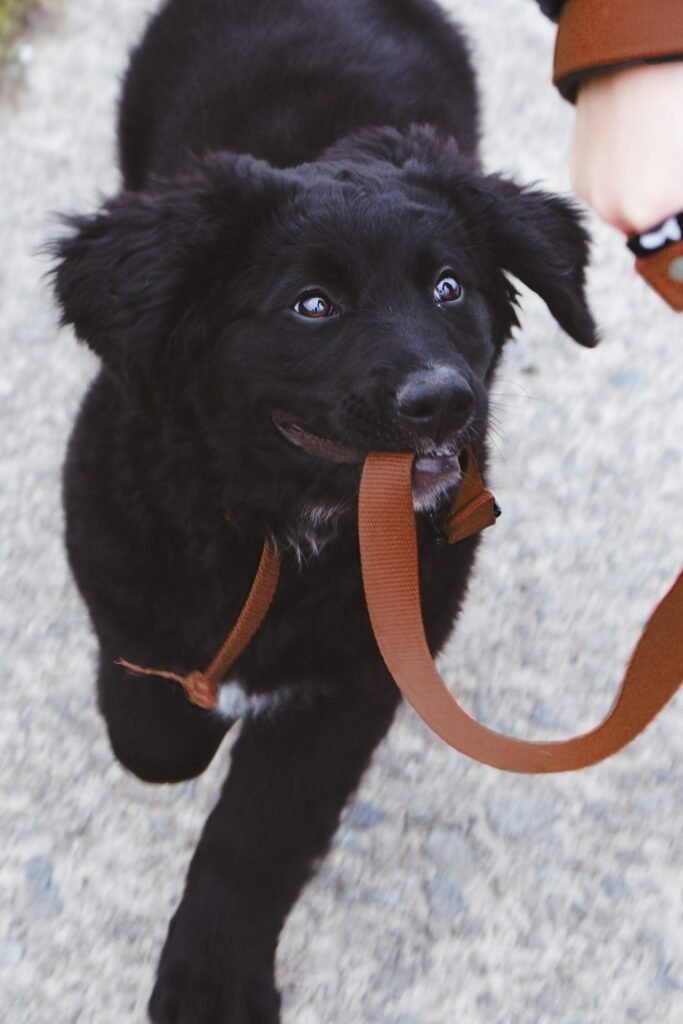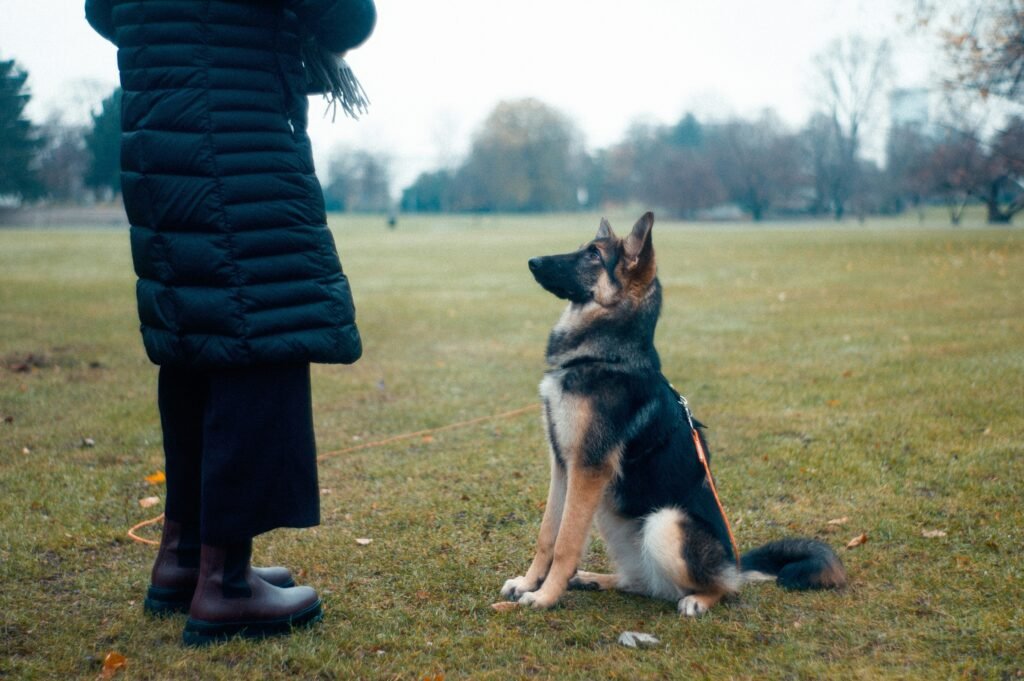If you’re a proud dog owner who wants to create a safe and comfortable space for your furry friend, look no further! This comprehensive guide will walk you through the step-by-step process of establishing a crate routine for your beloved pup. From choosing the right crate to introducing it to your dog and gradually increasing their crate time, you’ll discover all the essential tips and tricks to ensure a smooth and stress-free transition. Get ready to create a sanctuary where your dog can relax, unwind, and feel at home!

This image is property of images.unsplash.com.
Choose the Right Crate
When it comes to crate training your dog, one of the first steps is to choose the right crate. This decision involves considering the size of your dog and whether a plastic or wire crate would be more suitable.
Consider the size of your dog
The size of your dog is an important factor to consider when selecting a crate. The crate should be large enough for your dog to stand, turn around, and lie down comfortably. However, it shouldn’t be too big that your dog has excess space to move around, as this may encourage them to eliminate inside the crate. Measure your dog’s height and length to ensure you choose the appropriate size crate.
Choose between plastic or wire crate
Both plastic and wire crates have their advantages and disadvantages. Plastic crates provide a more den-like feeling, which can help your dog feel secure. They also offer more privacy and can be a good option for dogs who feel anxious in unfamiliar environments. On the other hand, wire crates provide better ventilation and visibility, allowing your dog to see their surroundings and feel more integrated with the household. Consider your dog’s specific needs and preferences when deciding between a plastic or wire crate.
Ensure proper ventilation and visibility
Regardless of whether you choose a plastic or wire crate, it’s crucial to ensure proper ventilation and visibility. If you opt for a plastic crate, make sure it has ventilation holes on the sides to allow for fresh air circulation. For wire crates, ensure the spacing between the wires is appropriate to prevent the dog from sticking its head out or getting caught. Proper ventilation and visibility will ensure your dog remains comfortable and safe in the crate.
Introduce the Crate Gradually
Once you have selected the right crate for your furry friend, the next step is to introduce it gradually and make it a positive and inviting space.
Place the crate in a familiar area
To help your dog feel more at ease with the crate, it’s recommended to place it in a familiar area of your home where they spend most of their time. This will make the crate feel like a natural part of their environment and reduce any initial hesitation.
Make the crate comfortable
A comfortable crate is more likely to be embraced by your dog. Line the bottom of the crate with a soft and washable bedding material such as a dog bed or a blanket. You can also add your dog’s favorite toys to make it more inviting and familiar.
Use positive reinforcement to encourage your dog to enter the crate
Positive reinforcement plays a crucial role in crate training. Encourage your dog to explore the crate by placing treats or their favorite toys inside. Use a happy and enthusiastic tone of voice to make the experience enjoyable for your dog. With time, they will associate the crate with positive experiences and willingly enter it.
Start with short periods of crate time
To ease your dog into crate training, begin with short periods of crate time. Gradually increase the duration as your dog becomes more comfortable. This approach will prevent overwhelming your dog and ensure they view the crate as a place of security and relaxation rather than confinement.

This image is property of images.unsplash.com.
Establish a Feeding Schedule
A consistent feeding schedule is beneficial for crate training and overall discipline and health of your dog.
Set regular meal times
Establish specific meal times for your dog and stick to them. Setting regular meal times will help regulate your dog’s bathroom habits and make it easier to establish a routine. Avoid free-feeding or leaving food out all the time, as this can disrupt the toilet training process.
Feed your dog inside the crate
To create a positive association between your dog and the crate, feed them their meals inside the crate. Place the food bowl towards the back of the crate to encourage them to enter. This will help them view the crate as a place of comfort and reward.
Remove any leftover food after each meal
After your dog finishes their meal, promptly remove any leftover food from the crate. It’s important to maintain cleanliness and prevent the crate from becoming a food storage area. This practice also reinforces the idea that mealtime happens inside the crate, and there is no need for lingering.
Designate Rest and Sleeping Time
A crate can serve as a designated space for your dog to rest and sleep comfortably throughout the day and night.
Create a calm and quiet environment
When it’s time for your dog to rest or sleep, create a calm and quiet environment around the crate. Dim the lights, lower the noise level, and make it a peaceful space. This will help your dog relax and associate the crate with downtime and relaxation.
Encourage your dog to go inside the crate for naps
During the day, encourage your dog to nap inside the crate. Use positive reinforcement and verbal cues such as “crate time” or “nap time” to signal that it’s time to go inside. Ensure the bedding is soft and comfortable, making it an inviting place for your dog to rest.
Keep the crate in your bedroom at night to provide comfort
To provide additional comfort at night, keep the crate in your bedroom. This will allow your dog to have a sense of closeness and security while still providing them their designated space. Being in close proximity to you can help alleviate any anxiety and ensure a restful night’s sleep for both you and your dog.

This image is property of images.unsplash.com.
Implement a Bathroom Routine
Establishing a bathroom routine is essential for crate training and housebreaking your dog.
Take your dog outside for bathroom breaks at regular intervals
Create a bathroom schedule and take your dog outside for bathroom breaks at regular intervals. This could be first thing in the morning, after meals, and before bedtime. By sticking to a routine, your dog will learn when and where they should eliminate, reducing the chances of accidents inside the crate.
Reward your dog for eliminating outside
When your dog successfully eliminates outside, reward them with praise, treats, or affection. Positive reinforcement will reinforce the desired behavior and encourage your dog to continue eliminating in the appropriate place. Be consistent with your rewards and make these bathroom breaks a positive experience for your furry friend.
Do not let your dog eliminate inside the crate
It’s crucial to prevent your dog from eliminating inside the crate. Dogs instinctively avoid soiling their sleeping area, and eliminating inside the crate can create confusion and set back the training process. Supervise your dog closely when they are not in the crate to prevent accidents and ensure they are taken outside in a timely manner.
Provide Chew Toys and Mental Stimulation
To make crate time more enjoyable for your dog, provide them with appropriate chew toys and mental stimulation.
Select appropriate chew toys
Choose chew toys that are safe, durable, and suitable for your dog’s size and chewing habits. Avoid toys with small or breakable parts that could be a choking hazard. Appropriate chew toys can help keep your dog entertained and prevent unwanted chewing on the crate or other items.
Rotate toys to prevent boredom
Keep your dog’s crate time engaging by rotating their toys regularly. This will prevent boredom and keep their interest in the crate. Introduce new toys periodically to stimulate their curiosity and prevent them from becoming disinterested.
Use puzzle toys to keep your dog mentally engaged
Puzzle toys are a great way to provide mental stimulation during crate time. These toys often require problem-solving skills and can keep your dog mentally engaged and entertained. Fill puzzle toys with treats or food to make them even more enticing.
Avoid Using the Crate as Punishment
It’s important to create a positive association with the crate and never use it as a form of punishment or confinement.
Never force your dog into the crate as punishment
Forcing your dog into the crate as a punishment can result in fear and anxiety towards the crate. Your dog should always enter the crate willingly and view it as a safe haven. Using the crate as punishment can have long-lasting negative effects on your dog’s behavior and overall well-being.
Ensure the crate remains a positive and safe space
Consistently reinforce the crate as a positive and safe space by using positive reinforcement techniques. Make sure your dog associates the crate with comfort, relaxation, and rewards. Avoid any negative experiences in or around the crate to preserve its positive connotation.
Use positive reinforcement for desired behaviors
Instead of punishment, use positive reinforcement for desired behaviors. Praise your dog, offer treats and verbal cues when they voluntarily go inside the crate, settle down, or exhibit calm behavior. Positive reinforcement is the most effective way to encourage and maintain the desired crate routine.
Practice Crate Training Exercises
To solidify the crate routine, practice specific crate training exercises to reinforce your dog’s understanding and cooperation.
Work on crate commands like ‘kennel’ or ‘inside’
Teach your dog specific crate commands like ‘kennel’ or ‘inside’. Use positive reinforcement techniques to reward your dog for following these commands. With repetition and consistency, your dog will learn to associate these words with entering the crate willingly.
Gradually increase the duration of crate time
Once your dog is comfortable entering the crate, gradually increase the duration of crate time. Start with short periods and gradually extend the time as your dog becomes more at ease. This will help your dog learn to remain calm and relaxed in the crate for longer periods.
Practice leaving the house while your dog is in the crate
To prepare your dog for moments when you need to leave the house, practice crate time when you are home but in a different room. This will help your dog adjust to being alone in the crate while still feeling secure that you are close by. Gradually increase the duration of these practice sessions to help your dog become accustomed to being in the crate when you are not present.
Address Separation Anxiety
If your dog experiences separation anxiety, it’s essential to address this issue during crate training.
Gradually increase the time apart from your dog
For dogs with separation anxiety, it’s crucial to gradually increase the time apart from them. Start by leaving for short periods and gradually extend the time. This gradual process will help your dog feel more comfortable and build confidence in being alone.
Implement desensitization techniques
Desensitization techniques can be helpful for dogs with separation anxiety. Gradually expose your dog to triggers that cause their anxiety, such as picking up your keys or putting on your coat, without actually leaving. This will help your dog become less reactive and associate these cues with non-threatening situations.
Consult a professional trainer if needed
If your dog’s separation anxiety persists or worsens despite your efforts, it may be beneficial to consult a professional trainer or behaviorist. They can provide guidance and develop a customized training plan to address your dog’s specific needs and anxieties.
Monitor and Adjust the Routine
Crate training is an ongoing process, and it’s important to closely monitor your dog’s behavior and comfort level inside the crate.
Observe your dog’s behavior and comfort level inside the crate
Regularly observe your dog’s behavior and body language when they are in the crate. Look for signs of stress, discomfort, or excessive whining or barking. Adjust the routine as necessary to ensure your dog remains both physically and emotionally comfortable in the crate.
Make adjustments as necessary
If you notice any issues or challenges during the crate training process, be proactive in making adjustments. This could include changing the location of the crate, using different bedding materials, or modifying the length of crate time. Different dogs have different preferences and needs, so it’s important to be flexible and find what works best for your furry friend.
Continuously reinforce positive behaviors
Consistency is key in crate training. Continuously reinforce positive behaviors by using positive reinforcement techniques such as treats, verbal cues, and affection. By consistently rewarding your dog for entering and staying in the crate, you will reinforce the behavior you want to encourage.
In conclusion, crate training can be a valuable tool for ensuring the safety, comfort, and overall well-being of your dog. By choosing the right crate, introducing it gradually, establishing a feeding schedule, designating rest and sleeping time, implementing a bathroom routine, providing chew toys and mental stimulation, avoiding using the crate as punishment, practicing crate training exercises, addressing separation anxiety, and monitoring and adjusting the routine as needed, you can create a positive crate routine for your furry friend. With patience, consistency, and positive reinforcement, crate training can help create a secure and comforting space for your dog while providing them with structure and boundaries.



